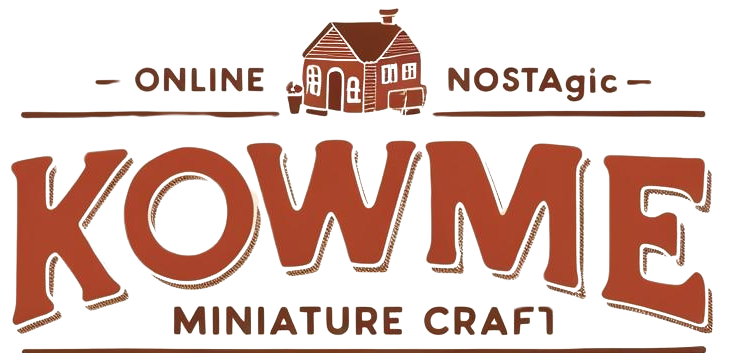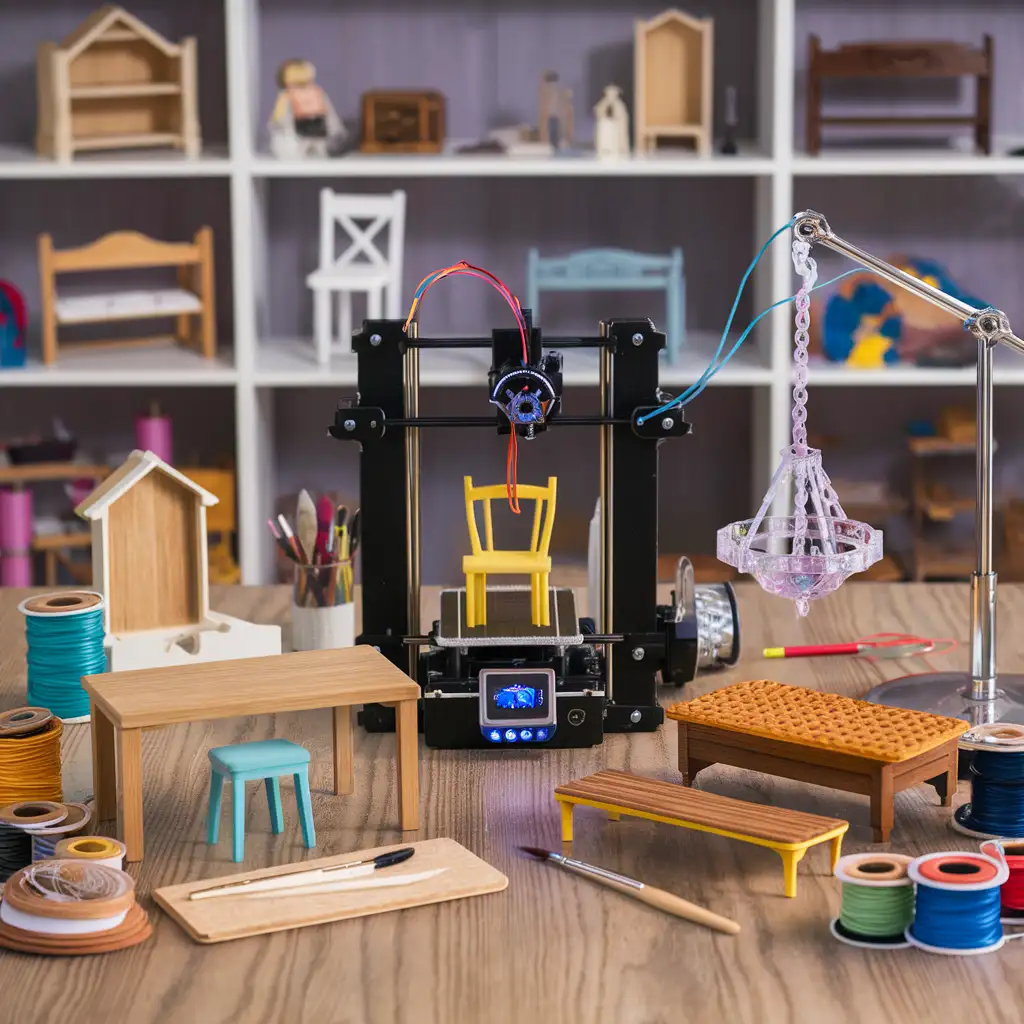Introduction
3D printing offers unparalleled opportunities to craft customized, precise dollhouse furniture. However, selecting the right material is key to ensuring your furniture is durable, visually appealing, and functional. This guide highlights the best materials for 3D printing dollhouse furniture, such as PLA, ABS, TPU, and wood-filled PLA, while exploring their unique benefits and ideal applications.
PLA: Affordable and User-Friendly for Dollhouse Furniture
PLA (Polylactic Acid) is an excellent starting point for crafting dollhouse furniture, especially for beginners. Its affordability and ease of use make it a go-to material for hobbyists.
Advantages:
- Beginner-friendly with minimal warping.
- Available in a wide range of colors and finishes for vibrant designs.
- Biodegradable and eco-friendly, sourced from renewable materials like corn starch.
Recommended Uses:
- Decorative furniture pieces, such as miniature chairs, shelves, or picture frames.
- Projects requiring multicolor layering or intricate details.
Limitations:
- Low durability under heat or heavy use, making it unsuitable for outdoor settings.
- Less robust compared to other materials like ABS or Nylon.
ABS: Durable and Resilient for Structural Dollhouse Furniture
ABS (Acrylonitrile Butadiene Styrene) is a strong and durable material, ideal for creating structural furniture that can withstand regular handling.
Advantages:
- Withstands high temperatures and physical stress.
- Can be polished with acetone vapor for a smooth, professional finish.
Recommended Uses:
- Sturdy furniture like miniature tables, bed frames, or cabinets.
- Components requiring heat resistance and flexibility, such as functional hinges.
Limitations:
- Requires a heated enclosure to prevent warping during printing.
- Produces fumes during printing, necessitating proper ventilation.
Nylon: Durable and Flexible for High-Stress Dollhouse Furniture
Nylon is a versatile material known for its strength and flexibility, making it perfect for intricate and functional furniture designs.
Advantages:
- High tolerance for weight-bearing and bending applications.
- Customizable through dyeing for unique color effects.
Recommended Uses:
- Hinged furniture elements like wardrobes or drawers.
- High-stress components such as load-bearing shelves or frames.
Limitations:
- Requires careful storage in a dry, sealed environment due to moisture sensitivity.
- Slightly more challenging to print compared to PLA or ABS.
PETG: A Balance of Strength and Flexibility
PETG (Polyethylene Terephthalate Glycol) combines durability with ease of printing, bridging the gap between PLA and ABS.
Advantages:
- Transparent or semi-transparent properties for unique aesthetic effects.
- Strong and impact-resistant, making it reliable for functional furniture.
Recommended Uses:
- Decorative clear elements like dollhouse windows, vases, or chandeliers.
- Functional furniture pieces requiring moderate strength and wear resistance.
Limitations:
- Prone to stringing during printing, requiring precise temperature adjustments.
- May demand additional fine-tuning for optimal results.
Wood-Filled PLA: Authentic Wooden Texture for Dollhouse Furniture
Wood-filled PLA blends PLA with wood fibers, creating furniture that mimics the texture and appearance of real wood.
Advantages:
- Provides a realistic wooden texture, perfect for rustic or vintage designs.
- Can be sanded, stained, or varnished for a polished finish.
Recommended Uses:
- Decorative furniture like benches, fences, or bed frames.
- Accents that enhance the authenticity of dollhouse interiors.
Limitations:
- Brittle compared to standard PLA, requiring careful handling.
- Requires larger nozzle sizes (0.5mm or greater) to prevent clogs.
TPU: Flexible and Durable for Cushions and Hinges
TPU (Thermoplastic Polyurethane) is a flexible material that’s ideal for creating soft, functional components for dollhouse furniture.
Advantages:
- High tensile strength ensures durability for functional parts.
- Excellent flexibility, suitable for cushions or retractable furniture elements.
Recommended Uses:
- Padded furniture such as sofas, armchairs, or mattresses.
- Flexible hinges or connectors for functional dollhouse elements.
Limitations:
- Requires slower printing speeds and precise settings for accuracy.
- May need extra preparation for adhesion to certain surfaces.
Conclusion
Choosing the right material is crucial for crafting stunning and functional 3D-printed dollhouse furniture. PLA is ideal for beginners and decorative pieces, while ABS and Nylon are better suited for structural components. For a professional, aesthetic finish, consider wood-filled PLA or PETG, and explore TPU for flexible additions. By understanding the strengths and limitations of each material, you can create personalized, high-quality furniture that brings your dollhouse to life.


